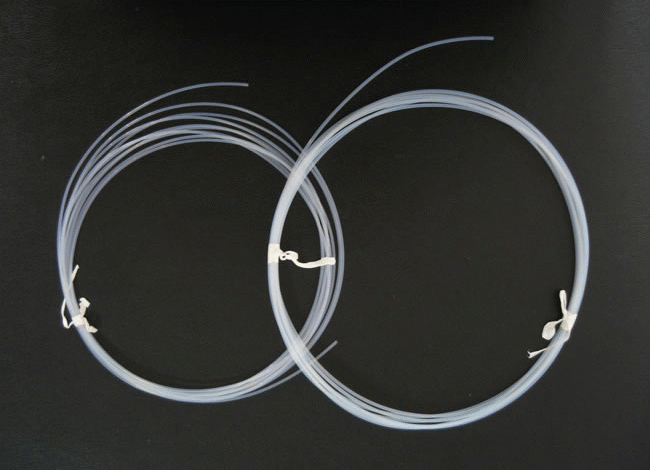How Air-Water Channels Improve Medical Equipment Performance?

The world of minimally invasive diagnostics and therapeutic interventions is the world where clarity and precision are not subject to compromise. Endoscopic procedures require a very high level of visual precision, with doctors completely dependent on their tools to make their way through internal structures. Among the often-overlooked contributors to this success is the endoscope air water channel.
Although it might appear to be an insignificant part, its contribution to keeping the lens clear, maximizing visibility, and operational efficiency is critical. This channel exemplifies how even the most unassuming features in medical equipment can drive significant performance improvements.
This article discusses the importance of air-water channels in endoscopy. We will reveal how these features are crucial to the future generation of precision healthcare tools, starting with design mechanics, all the way to how they promote improved outcomes.
Medical Equipment and Endoscopy: A Seamless Collaboration
Endoscopy has revolutionized the field of diagnostics and treatment, as it provides a less invasive way of visualizing the internal organs and tissues. This wouldn’t be possible without the sophisticated systems built into today’s medical equipment. All of this, including imaging sensors and irrigation valves, is integrated to deliver the accuracy, speed, and dependability required by healthcare experts.
The most fundamental aspect of this cooperation is the active borderland between mechanical engineering and medical utility. A typical example is an endoscope which is not a camera on a pipe. It is a versatile unit which has integrated lighting, fluidic control, instrument connectors, and visualization systems. All these systems need to integrate harmoniously to give clean and distortion free images in even complex or fluid rich environments such as the gastrointestinal tract.
Enter the endoscope air water channel—a dual-function conduit built specifically to maintain a clear view during procedures. This channel can blast controlled puffs of air or water, removing contamination on the lens and washing away debris, maintaining clear visibility.
The effectiveness of these built-in systems is directly proportional to patient safety and the accuracy of diagnosis in the modern endoscopy. That’s why medical equipment manufacturers place a strong emphasis on engineering seamless interactions between all endoscope components, including the humble but vital air-water channel.
What is an Endoscope Air Water Channel?
The endoscope air water channel is an integrated system within the insertion tube of an endoscope that serves two essential functions: lens irrigation and drying. This two-in-one channel gives air and sterile water to the distal end of the endoscope, and in real time, the lens can be cleaned in the course of a procedure.
The system generally operates through external pumps or built in pressure controllers. Upon activation, a spray of water is directed to the lens to wash away mucus, debris or blood and air is employed to dry the lens or clear any drops of fluid. Some models also have the option of the same channel being placed into the body cavity to gently flush or insufflate areas to be better seen.
In absence of this channel, the medical personnel will have to retract the scope each time it needs to be cleaned manually, this is in addition to taking more time to perform the procedure, this action also poses a risk. Any loss of visibility in high-precision work such as bronchoscopy, colonoscopy, or ERCP (endoscopic retrograde cholangiopancreatography) may have serious clinical ramifications.
These channels are made narrow, strong, and biocompatible by the manufacturers. They should be able to work consistently even in the event of frequent sterilizations and resist the challenges of different fluid pressures. The materials used include medical grade polymers and reinforced silicone, because of their resistance to corrosion and microbial growth.
Why Does This Channel Matters in Endoscopic Procedures?
The role of a clean and clear lens in endoscopic procedures cannot be overemphasized. Clinicians can overlook subtle abnormalities or fail to interpret what they visualize without continuous images. This is where the endoscope air water channel proves indispensable.
Endoscopes usually face some impediments like body fluids, mucus, or remaining blood during the procedures. The fogging of the lens, even in small amounts, can ruin an otherwise normal examination. Air-water channel actively avoids these problems, as it provides in-situ cleaning of the lens in real time, thus allowing continuous high-resolution imaging.
The advantage is not just visibility. When the endoscope does not have to be pulled out to be cleaned, time efficiency and the flow of procedures are significantly improved. Not only does this shorten the length of procedure, but it also decreases the amount of time that the patient is in discomfort as well as the chances of developing complications due to the length of the anesthesia.
Clinically, features such as the air-water channel enhance the diagnostic performance of the system since it provides optimal field of view at any given time. In therapeutic endoscopy, where control is of the essence, this can be interpreted into less error, less soiled resections and more controlled navigation.
Without components like the endoscope air water channel, medical equipment wouldn’t achieve the clarity modern healthcare demands. It could have a minor role, yet its impact on clinical outcomes is enormous.
Air-Water Channels: Design and Innovation:
Advancements in medical equipment design have led to significant improvements in the structure and efficiency of the endoscope air water channel. The internal geometry of these channels is constantly being optimized by engineers to provide increasingly tight control over the flow, and to minimize clogging.
Among the most significant inventions is the anti-backflow designs that ensure that there is no contamination of the internal fluid systems by patient secretions. This is essential in the sustenance of performance and sterility. Other models have dual-channel pathways to separate air and water flows to enable easier switching between functions during procedures.
Materials science has also contributed. Newer air-water channels are manufactured using antimicrobial polymers, or hydrophobic coatings that cause fluids to not stick to the channel. This minimizes biofilm and makes cleaning after the procedure easy.
Another thrilling innovation is miniaturization. As slimmer, smaller scopes are requested for pediatric and specialty procedures, engineers are able to incorporate high-efficiency air-water systems into smaller diameters without loss of performance.
Conclusion:
The endoscope air water channel may not be the most visible component of an endoscopic system, but its role is undeniably central to performance, safety, and success. In the intricate world of medical equipment, it exemplifies how every part—no matter how small—contributes to the larger goal of excellence in patient care.
This channel is essential to everyday checkup and life-saving procedures, as it guarantees the best visibility conditions, keeps the procedural flow, and helps to facilitate diagnostic accuracy. With technology, there is no end to improved integration, efficiency, and precision of the endoscopic system that we can anticipate in the future.
There is not much room to make mistakes in the healthcare industry. It’s innovations like the endoscope air water channel that help ensure clinicians can work with clarity, confidence, and control.




